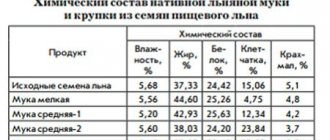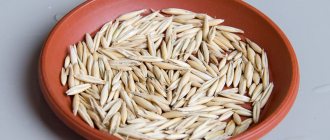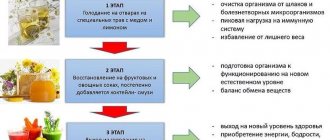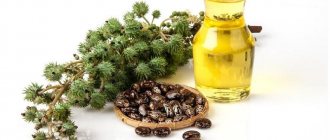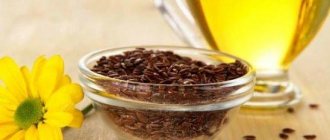Cleansing the intestines with bran is a simple and cost-effective way to rid your body of excess toxins, waste deposits, fecal stones and food particles that, for one reason or another, have not been sufficiently digested, or have been absorbed by the gastrointestinal tract and continue to rot. By its nature of origin, bran is the shell of wheat grain, which was formed after mechanical processing of the cereal crop. The product is incredibly light for the human digestive system and at the same time contains a huge amount of vitamins, amino acids and minerals, which are essential for the stable functioning of all abdominal organs. Let us consider in more detail how wheat bran can be effectively used so that it not only saturates the body’s tissues with useful components, but also cleanses the intestinal cavity of harmful substances.
Beneficial effects of bran
- Normalization of digestion. The content of hard-to-digest fiber enhances intestinal motility, which normalizes digestion and stool.
- Improved skin condition. Helps remove toxins and waste from the intestines, which improves the appearance of the skin.
- Prevention of atherosclerosis. They help reduce the absorption of cholesterol and its removal from the body, and, as a result, its reduction in the blood, adjusting the risk of atherosclerosis.
- Content of vitamins and minerals. The high content of B vitamins helps balance metabolic processes, nervous regulation, and so on.
- Benefits for weight loss. Swelling in the gastrointestinal tract creates the appearance of rapid saturation, satisfying hunger well and quickly and allowing weight adjustment.
- Prevention of diabetes. They lower blood glucose levels, being a good help in the prevention of metabolic syndrome and the treatment of diabetes mellitus.
Colon cleansing with bran is the most affordable way to cleanse yourself. Bran cleanses the intestines easily and gently, the main thing is to follow the dose and follow the scheme that will be described later in the article. First, let's talk about the beneficial properties of this wonderful product. Bran is obtained from the shells of grains after grinding. Wheat bran contains whole fibers, fats, carbohydrates, proteins, minerals, and vitamins. 100 g of wheat bran contains 165 kcal / 691 kJ. They can be added to any dishes, juices, compotes, jelly, baked goods, and can also be used instead of breadcrumbs. When consuming wheat bran, the main condition is adequate fluid intake, because Wheat bran can swell in the intestines. Nowadays, bran is a little undervalued, it is mainly used for animal feed, for baking, and few people use it for medicinal purposes. However, this particular nutritious product was widely popular until the mid-19th century. Already at that time, bran was added to bread to make it crispy. Today, wheat bran is increasingly used in alternative medicine. Bran treats intestinal problems, including constipation, stomach, and removes mucus from the body. In addition, bran is used as a dietary supplement for type 2 diabetes. They delay the rise in blood glucose levels. Bran nutrients: niacin, vitamins B1, B2, B6, vitamin C, E, calcium, iron, potassium, magnesium, sodium, phosphorus. However, less desirable substances are found in bran. For example, phytin. Phytin is found in many cereals in small quantities. This substance binds many valuable minerals in the intestines, i.e. does not allow them to be absorbed fully. However, this property of phytin is used in many weight loss diets. In the 19th century, the famous pastor Sebastian recommended eating bran for health, cleansing the intestines and lifting mood. Indeed, bran is rich in fiber, iron, vitamins, and flavonoids, which eliminate digestive problems and gently cleanse the intestines. Bran effectively stimulates intestinal motility, which is only a plus. Use of bran for intestinal ailments If you suffer from constipation, then bran will help you get rid of it. They effectively cleanse the intestinal walls of undigested food residues, facilitate bowel movements (for constipation), and create a feeling of complete bowel movement. Doctors usually talk about constipation when bowel movements occur less than three times a week. However, bowel movements should occur daily. Frequent constipation clogs the body with toxins, so it is necessary to regulate your bowel movements and cleanse your intestines. Wheat bran is usually well tolerated by the body when used regularly, but the daily dose should not exceed 30 g. Bran can be sprinkled on salads, baked goods, cottage cheese, etc. Before using bran in dry form, heat treatment in the oven for 15 minutes is necessary. For culinary use, it is recommended to steam the bran with boiling water for 30 minutes, and then, after draining the liquid, use it for its intended culinary purpose. Cleansing with bran Method No. 1 Take 100 g of bran, pour boiling water over it so that it steams for 20 - 30 minutes, then pass it through a meat grinder along with prunes (200 g), raisins (100 g). Take the mass 3 times a day, 2 tbsp. spoon. During cleansing, you should drink more liquid (1.5 l). Cleansing course: 2 weeks. Contraindications: peptic ulcer. Method number 2 Remember! Bran should not be consumed more than 7 tbsp. spoons per day, even to cleanse the intestines. There is another simple recipe for cleansing with bran. Just take 1 teaspoon of bran 3 times a day for 10 days. However, do not forget to cook in the oven. After 10 days, take bran 3 times a day, 2 tsp. within 7 – 10 days. Then 2 tbsp. l. bran 3 times a day for 10 days. In the future, the dose should be increased by 1 tsp. every 10 days until the intestines are cleansed. In this way, you can cleanse the intestines for 1 – 2 months, gradually increasing the dose. Method No. 3 Take bran 1 teaspoon 3 times a day for 2 weeks, then 1 tbsp. spoon 3 times a day for 3 weeks. After this, take 1 teaspoon 3 times a day for another week. This way the intestines will be cleansed gently and easily. However, do not forget to drink more fluids (6 glasses per day), eat right, i.e. Do not eat too fatty, sugary foods during the cleansing period. Give preference to fruits, cereals, soups, juices, casseroles, and vegetable salads. Bran for constipation Bran treats constipation. To eliminate constipation, you need to consume 20 to 30 g of bran daily for one week. The desired result will not take long to arrive. Note: Bran reduces cholesterol levels in the blood (oat bran is more effective in this regard), as well as the risk of certain diseases (heart disease, colon cancer). The effect of bran in the intestines: water retention and increased stool volume; the movement of stool in the intestines accelerates; The natural cleansing of the intestines from toxins, salts, and carcinogens is accelerated. Since bran contains hard lignin, it can damage the intestinal mucosa, so it is not recommended for people with intestinal diseases (ulcers, colitis, irritable bowel syndrome). Bran contains substances that form insoluble compounds of iron, zinc and calcium, thereby preventing the absorption of these minerals in the intestines. They can be contaminated with pesticides and heavy metals as they are in contact with the atmosphere and soil. When consuming bran for disease prevention, do not exceed the daily intake of 30 g (2 tbsp) per day. Wheat bran BIO - https://vk.cc/6yvVu9
Bran cleansing scheme
There are several ways to cleanse the intestines of toxins using bran. Depending on the type of cleaning: long-term soft or quick but hard, different bran is recommended, depending on the type of fiber.
- Gentle and long-term cleansing requires soluble fiber found in rice, wheat and oat bran.
- Hard and fast cleaning requires indigestible dietary fiber, which is found in corn and rye grains. Bowel movement occurs quickly and abundantly.
Option 1
- Eat 2 tablespoons of bran (the choice of type depends on the purpose), chewing thoroughly.
- Wash down with two glasses of cold boiled or purified water.
- Take before meals 15-30 minutes three times a day every day for two weeks.
Option 2
- 10 tablespoons of bran should be poured into two glasses of boiling water in a deep plate (the bran will swell significantly).
- Let it brew for at least 30 minutes.
- Divide the resulting mass into 4-5 doses.
- After each meal, wash down the “porridge” with a glass of water.
- Cleaning is carried out twice a week.
Read on topic: Diet for colon cleansing: nutrition principles, foods and menu for the week
Dish recipes
Not every person can eat bran. To make the dish not only healthy, but also tasty, there are some tricks. For example, the required dose of bran is poured into a glass of kefir, stirred thoroughly and left in the refrigerator overnight. Use the mixture in the morning before meals. The dish can be eaten instead of breakfast.
To improve the taste, use milk, juice or yogurt. The bran is pre-steamed in boiling water, allowed to swell for 20 minutes, and the water is drained. The resulting porridge is eaten at breakfast, washed down with one of the drinks.
For constipation, oat bran is preferable; consume it for a week. The daily dose (20–30 g) is poured into a glass of water. After an hour, the contents are divided into three portions. Before use, add boiled water to each portion. Instead of water, you can use kefir and add finely chopped prunes.
For patients with gastritis, bran cleansing should be carried out with extreme caution.
This recipe will suit them. Bran, 4 tablespoons, pour boiling water (400 ml). Leave for four hours, then squeeze out. Add a tablespoon of honey to the finished wort, heat it to 50°, drink it on an empty stomach in the morning. The course of treatment lasts 1 month.
For pregnant women, the regimen for taking bran is different. Steamed, they should be used as a snack, between main meals, washed down with sour milk or broth. If a woman suffers from edema, a teaspoon of raw material is kept in a water bath for 20 minutes. Drink the strained liquid half an hour before meals.
Children from 9 months to one year can be given a decoction of wheat bran. For a glass of boiling water, 5 g of raw material is enough. Keep it on low heat for 20 minutes. The strained broth is given to the child to drink in three doses or mixed into porridges and soups. The duration of the course is two weeks.
Types of bran
There are as many types of flour as there are bran:
- Wheat. They are widely used for the treatment of dysbacteriosis, diabetes mellitus, improving peristalsis and digestion, reducing the risk of developing cardiovascular diseases, helping in the fight against obesity and excess weight, and are a good prevention of cancer pathology.
- Corn. Helps improve immunity, improve metabolism and metabolic processes in the body, remove waste and toxins from the gastrointestinal tract, prevent the formation of colorectal cancer and hemorrhoids, increase potency in men and slow down the aging process.
- Rye. They normalize the excretion of bile, prevent cholelithiasis, help increase immune reactivity during exacerbation of viral diseases, and cleanse the intestines.
- Oatmeal. They enhance peristalsis, improve the functioning of the cardiovascular system, and help reduce cholesterol.
Signs of intestinal contamination
The intestine is a very long organ, capable of accumulating a lot of polluting deposits in its winding paths; over time, the released toxins make themselves felt with a host of symptoms. The colon cleansing process should be carried out if the following symptoms occur:
- the appearance of greasy facial skin, which was not there before, rashes on the skin of the chest, cheeks, and back;
- bloating, accompanying flatulence;
- active rumbling and bubbling in the intestines;
- frequent constipation;
- sudden fatigue, inexplicable apathy towards life;
- obesity;
- the appearance of a bitter taste in the mouth, an unpleasant odor in the oral cavity.
From time to time we need to listen to our body what has become normal for us, for example, occasional bowel irregularities may actually indicate an existing problem. Before you decide to cleanse your body and learn how to properly take bran for this, you should visit a doctor for examination and consultation. According to research, each human body must get rid of fifty kilograms of dead cells, not counting fecal stagnation and toxins. Of course, he cannot do this on his own, so he needs to organize bowel cleansing annually.
dietary supplements
| Tradename | Purpose | Price, where to buy |
| Now Foods |
| The package contains 400 g of bran; Purchase through online stores; The cost is from 300-100 rubles, depending on the type of bran (oat, rice, rye, and so on). |
| Nature's Way Black Walnut |
| In addition to bran, the capsules contain black walnut; Price on Internet resources from 400 rubles. |
| DietMark (Russia) |
| Sold in pharmacies and food stores in departments for diabetics; Price from 50 to 100 rubles per package of 200 g. |
Bran cleansing: benefits and harms
Bran is the purification that remains from the husking of various grains. It is believed that beneficial microelements in the husk exceed 90% of the total grain. Fiber, which makes up bran, is a building material and contains the following useful substances:
- vitamins of group B, A, C, D, H, K and T;
- potassium and magnesium;
- phosphorus;
- selenium;
- iron and iodine;
- lutein and lycopene.
All these minerals are very important for building a healthy body, hair and nail growth, and a beautiful appearance, so bran for intestinal cleansing will help not only expel dirt and toxins, but also enrich the body with useful substances.
Bran has no taste or smell, which makes the process of eating it much easier: it can be added to juices, water, cereals, yogurt and other foods as desired. With this diet, the feeling of fullness comes faster and hunger does not bother a person longer, thanks to the swelling fibers of the grain husk.
The use of bran in food helps with the following diseases:
- allergy;
- renal failure;
- obesity;
- infections;
- ORZ, ORV;
- atherosclerosis.
Benefits of colon cleansing with fiber:
- relief from frequent constipation. Bran, entering the intestines, not only pushes out stagnant feces, but also trains the peristalsis of the organ, and subsequently, after a course of fiber intake, the intestines begin to work on their own without problems;
- normalization of blood sugar levels. Insulin is produced more slowly due to the difficult digestion of bran, which therefore minimizes the risk of diabetes;
- improvement of metabolism. Bran for intestinal cleansing regulates the functioning of this organ and improves peristalsis and absorption, therefore metabolism accelerates and metabolism improves;
- The level of bad cholesterol decreases. The gallbladder and liver begin to work with double strength during and after consuming fiber. Beta-glucan, which is part of bran, is able to clean blood vessels, reducing cholesterol levels in the blood.
- Getting rid of stool disorders. A course or constant diet using bran corrects the problem of constipation; fiber fibers are not digested and increase the volume of feces, which causes stool to pass.
According to nutritionists, wheat bran is considered the most useful fiber for cleansing. They are indicated for diabetes, obesity, and edema. Before deciding which bran is best for cleansing the intestines, you need to understand: are they harmful? Some types of fiber have a number of contraindications, which means they cannot be taken orally. The use of bran during inflammatory processes of the gastrointestinal tract, obstruction, fiber intolerance, threatens overflow and clogging of the organ, bloating, the development of dysbiosis and hypovitaminosis.
Are there any contraindications and side effects?
Contraindications to the use of bran as a food additive are:
- acute inflammatory and infectious diseases of the gastrointestinal tract: gastritis (especially associated with Helicobacter Pylori), colitis, enteritis, and so on;
- allergic reactions to gliadin (cereal protein);
- bleeding of the gastrointestinal tract;
- pregnant and lactating women;
- children under three years of age;
- discomfort when eating bran.
The main side effects when consuming bran can be abdominal pain and significant discomfort in the form of heaviness in the abdomen - this occurs due to the swelling of the fibers and their pressure on the walls of the gastrointestinal tract. Flatulence, vomiting, nausea and heartburn are possible. Sometimes there may be diarrhea.
Contraindications
Bran also has contraindications: drinking bran is not recommended for inflammatory diseases of the gastrointestinal tract, such as gastritis, colitis.
- In case of osteoporosis (increased fragility of bones), the adsorbing properties can interfere with the absorption of calcium from the gastrointestinal tract, so bran should be consumed with caution.
- In case of diverticulitis (an intestinal disease in which thin-walled protrusions form on its surface), swelling of bran in the intestines can lead to its rupture and peritonitis, and their use is contraindicated.
If there are no contraindications, then cleansing the intestines with bran will only be beneficial.
A little about digestion
The process of digestion in humans is very complex, it all begins in the mouth: food is mechanically processed, moistened with saliva, and then enters the stomach.
Under the influence of gastric juice, food is broken down and moves into the intestines. Further breakdown and absorption of food occurs in the intestines. In the large intestine, water is absorbed and feces are formed from food debris. Most of the dry stool residue consists of non-living bacteria, fiber, and rectal secretions. The normal amount of bowel movements is considered to range from three times a day to three times a week.
For normal digestion, it is necessary to coordinate the work of all systems involved in this process, a normal amount of water, and food rich in fiber.
At the same time, bran has minimal contraindications:
- Individual intolerance
- Exacerbation of gastritis
- Intestinal inflammation
- Ulcers
An additional advantage of taking them is their availability, simplicity and ease of use. In addition, if the recommended standards are observed, taking the product is completely safe.
Cleansing the intestines with bran at home - the advantage of this method
- It cleanses well not only the intestinal tract, but also the entire body as a whole. The functioning of the circulatory system improves, the blood vessels become healthier, and after this you can observe a gradual normalization of blood pressure. Even headaches and feelings of weakness will gradually disappear.
- After the intestines get rid of all harmful accumulations, you can even see changes in appearance. The skin will become better, small pimples will disappear, you can even observe a rejuvenating effect, and annoying wrinkles will disappear.
- If you eat it regularly, the cleansing effect will even affect your mood; it will be elevated, because your whole body will be filled with lightness, and you can simply forget about depression and apathy.
The most common way to consume bran
The most common type of bran which is better than others for cleansing the intestines (read how to take them here) is wheat bran. They contain a large amount of useful minerals and vitamins. The calorie content of wheat bran is relatively small. There are only one hundred sixty-five kilocalories per hundred grams of product. Thanks to this, bran can be safely eaten without worrying that it will cause weight gain.
Most often, bran is added to baked goods. You can use them to make diet breads, sweet pastries and muffins. For those who do not like to indulge in baked goods, even dietary ones, there is another option - salads. A lot of them contain bran. At the same time, the taste of the salad practically does not change. In addition, bran is added to juices, compotes and any other dishes.
If you eat bran, you should drink as much liquid as possible. Tea or coffee doesn't count. We are talking exclusively about clean water.
The best bran for colon cleansing
Different manufacturers offer a large selection of product brands. When choosing, it is important to take into account the composition and other characteristics:
- initial set of components;
- calorie content;
- origin - from oats, rice, wheat, rye, corn, flax.
Let's consider the features of each type of bran from the point of view of effectiveness and benefit. For those who require soluble fiber, it is better to consume wheat, rice or oat fiber. Rye and corn are in the insoluble category. The first option is suitable for gentle cleansing, for a long-term diet, the second - for quickly emptying the intestines in case of constipation, problems with stool, which promotes rapid bowel movements.
The calorie content of bran is not so low, but due to the fact that it is impossible to eat a lot of it, this factor should not worry you - the benefits from the product are much greater. Eg:
- in oatmeal – 319 kcal per 100 g,
- wheat – 179 kcal,
- rye – 220 kcal.
Methods of taking the product
Methods of taking bran and duration of use vary.
- The first method is designed for one and a half months. Taking the product begins with a two-week course of a teaspoon in three doses over twelve hours. The grinding powder is consumed half an hour before meals, washed down with warm water. After fourteen days, the dose is increased to one tablespoon three times a day. So until the end of the course.
- The following method of consuming husks is designed for a thirty-day course. For the first ten days, take one teaspoon three times a day. For the next ten days, the portion is increased to two teaspoons, three doses per day. For the last ten days, the husk is eaten in the amount of two tablespoons three times a day. For greater effectiveness, after completing the course, you need to eat one teaspoon of bran every ten days before meals.
- When you don’t have time to eat bran regularly, you can eat the product once a day. In the morning, on an empty stomach, eat two teaspoons of the husk with warm water. The duration of cleansing is not limited in time.
- The following method of preparing grinding is healthy and tasty to use. Two hundred grams of prunes, one hundred grams of raisins, finely chopped. One hundred grams of bran is poured with hot water. Insist for thirty minutes. The ingredients are mixed, the resulting mass is eaten for fourteen days, two teaspoons three times a day.
FAQ
Most people who have decided to take a course to improve their digestive system and have chosen the method of daily intake of wheat bran quite often ask the following questions that interest them.
Is it possible for pregnant women to use bran?
There is no categorical prohibition that women who are pregnant cannot afford to consume bran. The main thing is to control their quality. The grain, after processing of which the cereal husk was obtained, must be of excellent quality and not be treated with chemicals in the form of herbicides, pesticides and other toxic substances. It is almost impossible to track this, so if there is no urgent need to consume bran during pregnancy, then for the baby’s safety, it is better to limit the diet to more familiar foods.
Is it possible to eat bran if you have gastritis?
It all depends on the severity of the current disease. If a person has been diagnosed with inflammation of the gastric mucosa, but to a mild degree, when redness of the walls of the digestive organ is present, but the presence of pain has not been established, then in this case, taking the skins of wheat grains is not prohibited.
Acute forms of gastritis with signs of a pre-ulcer condition exclude the possibility of cleansing the intestines with bran. The restriction is due to the fact that the patient’s well-being may sharply worsen and a stomach spasm may occur.
When is it better to eat bran in the morning or evening?
It is better to consume this product in the morning, when intestinal motility is at its peak and the body itself is trying to cleanse the digestive organs before starting a new work cycle, which will last throughout the current day and end with a night's rest.
In the evening, eating bran is not advisable from a medical point of view, because during sleep, all organs should be at rest, and the presence of bran in the intestines will only stimulate tissue awakening, which will negatively affect their functionality in the future.
If you have any other questions related to nutrition and eating wheat bran in order to cleanse and normalize the intestines, you can always seek advice from a gastroenterologist, who will give a detailed explanation of the benefits and harms of this product in a specific clinical case .
The effectiveness of weight loss, health improvement and the prevention of many diseases are largely based on high-quality intestinal cleansing. Bran is a well-known and inexpensive product, an excellent means for detoxifying the body. Let's consider the criteria for choosing bran and recipes for cleansing the digestive system.
Who can and who can’t use bran
The shell of cereals contains up to 80% of useful substances, compared to the remaining part. They are practically not contained in white bread, so nutritionists do not recommend consuming it.
The most common bran is from wheat, but in addition to it, other types are widely represented on the market.
Wheat
The energy value of the product is 160 kcal. They contain many useful substances, including iodine, zinc, potassium, healthy fats, and acids.
Rye
https://www.youtube.com/watch?v=
Calorie content is 250 kcal/100 g, while they contain a significant protein content, iron, manganese, and magnesium are present. Source of vitamins E, A, K, B vitamins
Oatmeal
Calorie content 300 kcal/100 g, also a large list of minerals and vitamins
Corn
300 kcal/100 g, contains copper, zinc, phosphorus, sodium, calcium, vitamins, and a higher amount of carbohydrates compared to other cereals. Carbohydrates in cereals are digested more slowly, maintain blood sugar and keep you feeling full for a long time.
Rice
Of all types, they contain the largest amount of fat, but these fats are easily absorbed by the body, unlike fats of animal origin. Calorie content 320 kcal/100 g.
Based on rice bran, rice oil is prepared, which is widely used in cosmetology and even in medicine; rice oil is called “health oil”.
Linen
250kcal/100, contain a large amount of protein - 30g, the main feature is the content of Omega-3 acids, this group of acids is not produced in the body, so they must be consumed with food.
Eating bran to cleanse the intestines is beneficial for both children and adults. If a person feels good, this does not mean that there are no toxins and salts in his body. In addition to the fact that this product has a positive effect on a person’s general condition, it can also have a negative effect. This happens if there is some kind of illness or if bran is consumed incorrectly.
- ulcer;
- problems with the abdominal cavity;
- gastritis;
- with diarrhea.
You can’t eat constantly; they can have both a positive and negative effect on the body. Long-term use can cause the same hypovitaminosis, which, when used correctly, they eliminate. Doctors recommend eating no more than 10 days without breaks.
If a person uses any medications at the same time, he needs to consult his doctor. Not all medications are compatible with fiber.
Who can and who can’t use bran
Despite the great benefits that bran provides to the body, some people should not consume it. The product contains hard lignin, which can harm the intestinal mucosa. Based on this, the product is prohibited if:
- exacerbation of gastritis, peptic ulcer;
- colitis, enteritis;
- complex use of medications;
- individual intolerance.
It is not allowed to exceed the recommended dose of the product. Otherwise, serious stomach problems and hypovitaminosis (lack of nutrients) may occur.
How often is colon cleansing done?
It is important not to abuse this product, because bran is not a panacea for all ills, for fat deposits. You can eat as usual, but it is better not to eat harmful foods - this will minimize the benefits.. But you should not radically change your diet.
It is definitely important to increase the amount of fiber, because if there is a deficiency, taking bran suddenly and without preparation is fraught with consequences. It is worth introducing them into the diet gradually. For about 3 weeks, eat raw vegetables, fresh fruits, take them in the morning. To avoid disturbances, it is worth reducing the amount of food that contains a lot of plant fiber - in combination with bran this will have a negative effect.
Important: follow the drinking norm, drink 1.5 - 2 liters of clean water a day, use juices and decoctions.
Cleansing with bran can be done once a season, if the body is highly polluted and there is a need to lose weight. They are used in alternative medicine, in Russian cuisine and as a component of various decoctions and potions. In the old days, they were used to heal constipation and other gastrointestinal disorders, and were used as a food supplement, especially during crop failure.



